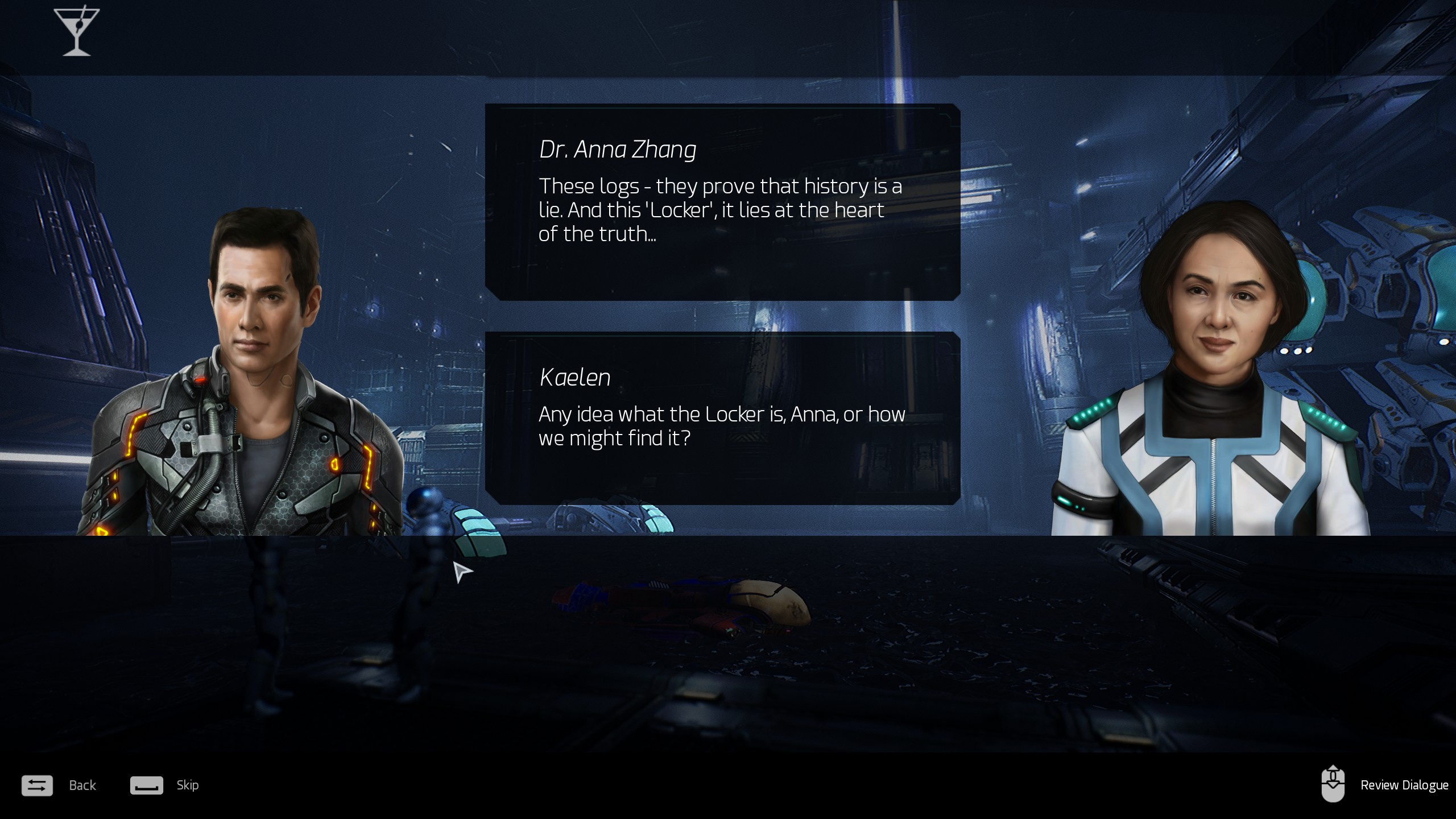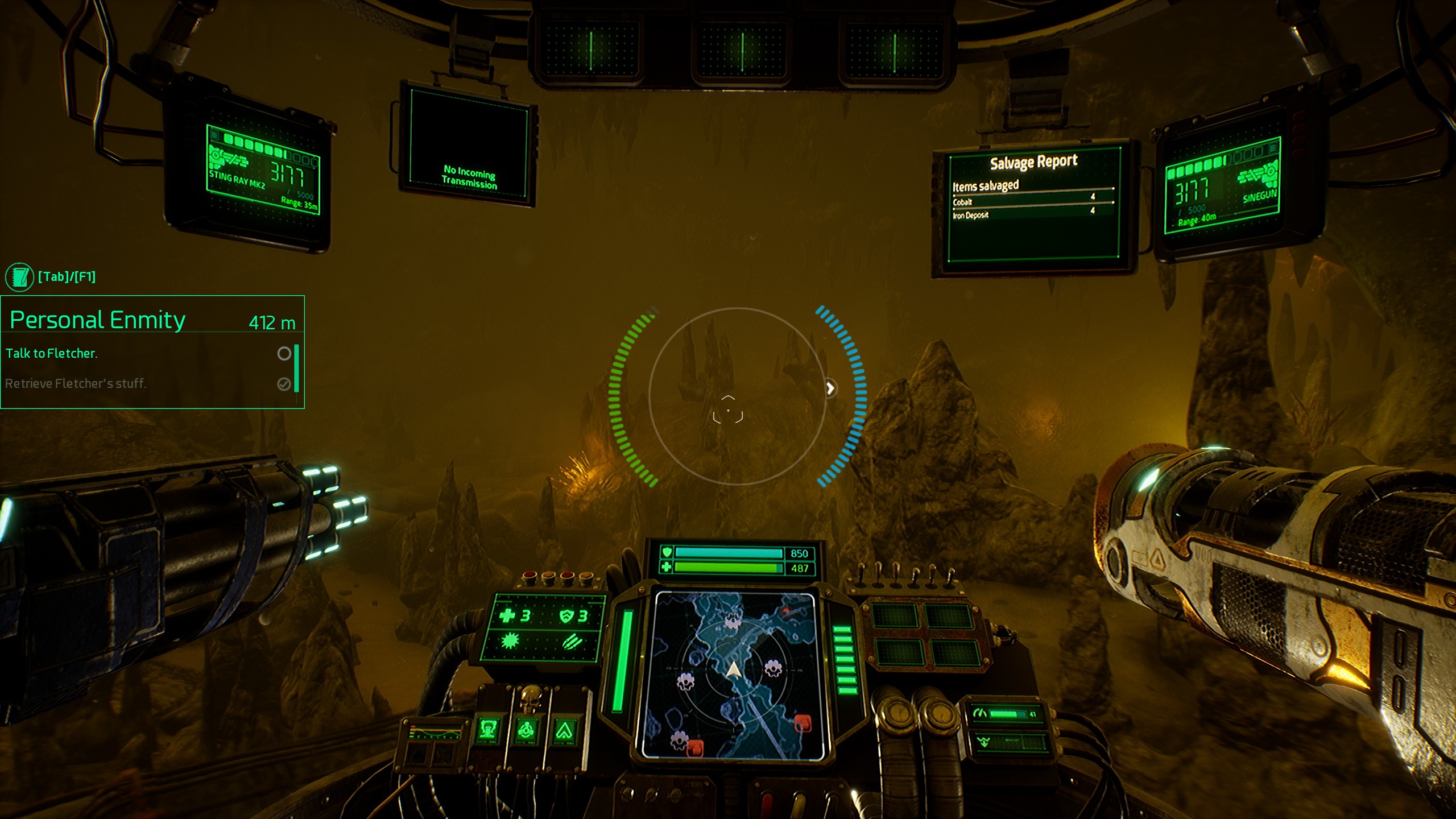Search
[{{{type}}}] {{{reason}}}
{{/data.error.root_cause}}{{{_source.title}}} {{#_source.showPrice}} {{{_source.displayPrice}}} {{/_source.showPrice}}
{{#_source.showLink}} {{/_source.showLink}} {{#_source.showDate}}{{{_source.displayDate}}}
{{/_source.showDate}}{{{_source.description}}}
{{#_source.additionalInfo}}{{#_source.additionalFields}} {{#title}} {{{label}}}: {{{title}}} {{/title}} {{/_source.additionalFields}}
{{/_source.additionalInfo}}- Details
- Category: Computer
- By Cinque Pierre
- Hits: 1485
Aquanox Deep Descent (PC)

Aquanox Deep Descent
Published By: THQ Nordic
Released: October 16, 2020
Available On: PlayStation 4; Windows; Xbox One
Genre: First-Person Shooter
ESRB Rating: T for Teen: Blood, Mild Language, Violence
Number of Players: Up to four players co-op; up to ten players competitive
Price: $29.99
(Humble Store Link)
Thank you THQ Nordic for providing us with a review code!
So I’m assuming this will be a thing THQ Nordic is focusing on. Funding developers to revive old franchises into a world with “higher standards” whether it is to preserve series that were lost in time or otherwise. Unlike some of the other revivals such as SpongeBob: Battle for Bikini Bottom Rehydrated and Destroy All Humans! (2020) which were remakes, Aquanox Deep Descent is a reimagining by Digital Arrow that was successfully Kickstarted.
The Aquanox series is a fairly old set of underwater first-person shooters, a series I am unfamiliar with as I only started PC gaming in 2009. It began with Archimedean Dynasty (or Schleichfahrt for Germans/Europeans) in 1996, followed by Aquanox 1 and 2 in 2001 and 2003 respectively. Aquanox 1 was technically impressive during its time, as it has its own benchmark tool in AquaMark 3. Obviously, any decent rig these days blows the benchmark out of the water, but for something that came out 20 years ago, it is still a sight to behold. Aquanox Deep Descent follows in the footsteps of its predecessors, with some more modern sensibilities added to the experience.
Deep Descent is both a reboot and a prequel to Aquanox. The general plot is that humanity screwed up at some point and caused the apocalypse. Centuries later, humanity lives completely underwater divided into factions or mercenary groups all fighting for control or survival. Creatures of the deep are also infected by nanoplankton, turning them into very hostile beings that emit a fluorescent green. In the new world of Aqua, four humans by the name of Kaelen, Nabila, Fedor, and Hannah who awoke from cryostasis are now in a world they are unfamiliar with. Being rescued by two men named Ishmael and Okabe, the four find out they are part of Project Nannu with zero recollection as to what the project is about. Their goal is to find out what Project Nammu is and why they were specifically chosen.

Strong Points: Immersive with a detailed heads-up display and good atmosphere
Weak Points: Side missions are stale; many features feel half-baked; not all characters are voice acted
Moral Warnings: Ship-on-ship violence; blood, according to the ESRB; language including “d*mn”, “h*ll”, “a*s”, “b*st*rd”; “godforsaken” is said once; some cleavage in female portraits; rejection of authority/law
As fitting for the setting, Deep Descent lets you move in six degrees of freedom. Before the game begins is a nicely done optional tutorial letting the player get used to the controls. The default keybindings are a little strange for a first-person shooter but don’t take long to get used to. They can be rebound to your pleasing and Deep Descent supports keyboard+mouse and controller. It’s controller friendly too as some features were made with controllers in mind, such as the “weapon wheel” (although in this case, Deep Descent uses that for its submenu). Your Deep Sea Fighter (DSF) controls like it’s underwater as there is a sense of weight and resistance to the movements. An interesting contrast to the more arcade-looking "flight" that were the previous Aquanox entries. Turning and navigation is somewhat slow outside of quick boosts and maneuvers that can only be done every once in a while. What’s really impressive is the heads-up display. The entire cockpit of the DSP acts as the HUD and covers the entire field of view, showing ammo count, a map, objective markers, and sub weapons. Each DSF even has its unique HUD, adding to the atmosphere. Weapons do have some variety to them with them fulfilling the roles such as machine guns, rockets, and snipers and two can be mounted on each side of your DSF (one for each mouse click or trigger). The number of weapons can feel a bit bloated because, in missions, you can unlock direct upgrades to some of these weapons, but the weaker weapons don’t get replaced. There was a blanket fix in an update that allowed players to favorite and unfavorite weapons so that cycling through them in combat doesn’t have you go through the inferior choice.
The world of Aqua is semi-open world with drop in/drop out multiplayer as the narrative centers around the four characters of Project Nammu (the host plays as Kaelen). I do not know how the co-op features work as I was always the only person playing whenever I got on. There are many areas split between travel gates that the narrative uses as warp points. Scattered throughout the world are salvage points where the DSF scans to acquire materials that can be used for crafting upgrades, ammo, or health/shield packs. Shields do regenerate over time whereas health only regenerates with the use of a pack or docking at a station. Missions are split between primary and secondary missions. Outside of those and salvaging materials, there isn’t a whole lot to do in the vast sea, which I guess does make sense, but this is a video game after all. I feel the open-world structure manages to harm Deep Descent as there is a lot of downtime going between missions. Outside of a few missions, the distances between missions are short, and most secondary missions do end up feeling pretty dull as they are either glorified fetch quests or kill a small number of enemies. The only reason to do them is for the extra currency and weapons you can earn from them.
Aqua’s visuals are dark and murky. How appropriate, especially for a post-apocalyptic setting. I like the visuals of Deep Descent and cranking it up to max settings, they do impress, even if I could only manage 30 frames per second. I did have to crank it down to the lowest settings to get a much more acceptable 80+. Performance can be a bit of an issue because there’s no hard limit on the FPS, leading to fluctuating usage on the computer components. The humans are drawn realistically with a good sense of anatomy. Cutscenes are portrayed in 2D stills and even though they look nice mostly because of the solid art design, it’s pretty clear they exist due to budget reasons. It’s a shame that the atmosphere and rendering are almost in a way wasted because the most impressive environments won’t be seen until a good 80%-90% completion of the game.

Higher is better
(10/10 is perfect)
Game Score - 66%
Gameplay 10/20
Graphics 8/10
Sound 6/10
Stability 4/5
Controls/Interface 5/5
Morality Score - 75%
Violence 6/10
Language 5/10
Sexual Content 8.5/10
Occult/Supernatural 10/10
Cultural/Moral/Ethical 8/10
In terms of the voice acting—some may say it’s bad and others might say it’s generic. I say it’s a bit hammy as many of the voice actors do overact their lines. There’s also the odd casting choice as one of the characters who is supposedly Russian, has a British accent. At times, I found it unintentionally hilarious as Kaelen’s voice always sounds like he’d rather be doing anything else than what he’s doing right now. In a strange decision, not every character is completely voiced. All of the characters named by Kickstarter backers either have a short line or speak in grunts. The four playable characters who are voiced for every other line are not voiced during these conversations either. I also noticed some instances of where the lines voiced are not always what is said in the subtitles, and that gets more comment as the game goes on. There is some music in Deep Descent, and instead of the blaring German techno that the prior entries had, this one goes for an instrumental design. Not as memorable, but more fitting. Most of the time, the sounds of moving through the cold waters and weapons shooting will act as the audio ambiance. The sounds of the weapons could go for less “pew pew” and more “boom” in my opinion.
I could only test out the multiplayer with bots, so I don’t have a lot to say in that regard. Up to ten players can participate in deathmatch or team deathmatch across four maps. The multiplayer controls just like the single-player but with a few key differences. The deathmatch modes are a mix of class-based shooters with ships having a default loadout with starting weapons and sub weapons, and an arena shooter with other weapons and items spawning on the field. The multiplayer does seem like it can have a charm, although you’d be hard press to find anyone playing at almost any time.
Given the nature of Deep Descent, there are definitely some issues present. Violence mostly consists of vehicular combat with explosions and wreckage. Every DSF is manned so the four protagonists do partake in a lot of killing. According to the ESRB “Creatures emit puffs of red blood when hit”, but all I saw was the green whenever sea creatures are shot at. Language is somewhat mild, with the typical “d*mn”, “h*ll”, “a*s”, and “b*st*rd” being the choice of words. I noticed one instance of “godforsaken” although it’s a little hard to say if it’s meant in a literal or blasphemous sense (but I’ll mark it down as such anyway). Sexual content isn’t all that much with the worst showing is a small amount of cleavage from the character portraits. For the most part, the four humans of Project Nammu are mercenaries and there is a faction by the name of the Atlantic Alliance whose self-claimed profession is to uphold the law. In a couple of cases, Project Nammu does aid “villains” that the Atlantic Alliance is after and they do resist arrest from AA at one point in the story.
Aquanox Deep Descent feels like if someone created Aquanox from memory based on what someone else was describing to them about the Aquanox series. It’s a valiant effort as there is some great choices made within, but there are just so many other design choices that hold it back. What’s the point of an open world when little was done with it? What’s the purpose of a crafting system when it’s only used for the bare minimum? I think Digital Arrow needed to sit down and think about why they were adding these features and how they fit into the vision instead of possibly adding them because they are popular among the masses. There’s very little replay value as the majority of upgrades are put towards the last fourth of the game (with a whopping 33% only unlocking within the last two missions) and the multiplayer is as empty as the vast waters itself. Deep Descent could have been improved with a much more linear experience with a stage select so that people could get the chance to use the late game upgrade and also not be padded down with so much downtime and boring missions.
I don’t hate the game, but I don’t exactly like it either—and combined with the aforementioned plus the price point, I cannot recommend it to most people. (Especially when an extra scene linking Deep Descent to Archimedean Dynasty and Aquanox 1 & 2 is in a $10 DLC.) Maybe when the unofficial VR support gets implemented or a very deep discount.








